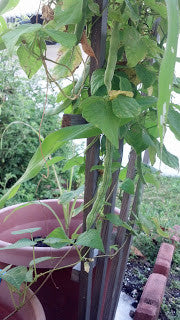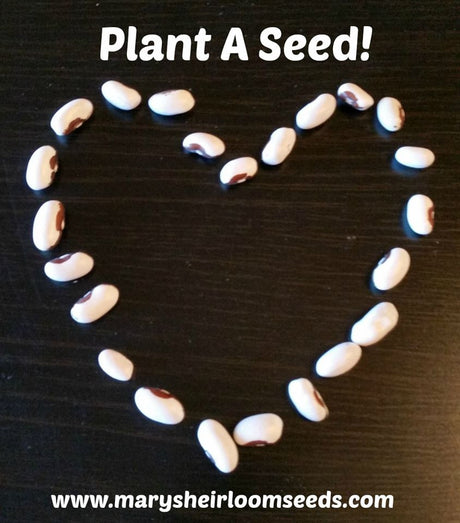
Pest Control & Prevention in the Garden
We asked our customers what issues they face in the garden and the top responses were Weeds and Bugs. Today we're going to tackle the Bugs & Pests issue. I...
Mary Smith |
Welcome to our store Learn more

We asked our customers what issues they face in the garden and the top responses were Weeds and Bugs. Today we're going to tackle the Bugs & Pests issue. I...
Mary Smith |

We've already shared our Alfalfa Meal tea so today we're making KELP tea. This is especially important if you plan on planting Organic Garlic this year. What is KELP...
Mary Smith |

In case you missed it, we already posted about Identifying Common Garden Pests. Now, we need to identify "Good Bugs" or insects in the garden and what they can help. ...
Mary Smith |

Mary's Heirloom Seeds Do you have pesky bugs in the garden that eat your veggies and plants before you get to enjoy them? How about bugs in the house? We...
Mary Smith |

Mary's Heirloom Seeds Quick Links Seed Starting SUPPLIESOrganic Plant Food Organic Pest Control Heirloom BEANS Heirloom BEETS Heirloom CABBAGE Heirloom CARROTS Heirloom CORN Heirloom CUCUMBERS Heirloom...
Mary Smith |

ORGANIC PEST CONTROL Part 1 We asked our customers and friends what questions or issues they have in the garden. The overwhelming response was PEST Control. So of course we're...
Mary Smith |

It's that time of year again. It's SPRING and we're working in the garden. We've had quite a few requests for organic pest control methods so we're about to share...
Mary Smith |
We've added so many AMAZING things at Mary's Heirloom Seeds this Summer! SPECKLED LETTUCE NEW this Summer! We've announced our winner for the Heirloom Seeds Giveaway. Even if you didn't...
Mary Smith |
Welcome to the final installment of our Organic Pest Control series at Mary's Heirloom Seeds. We hope you have picked up a few new tips and tricks for your organic...
Mary Smith |
A magnificent oil with numerous benefits for both therapeutic and medicinal use. Among other properties, this oil is anti-septic, anti-viral, anti-bacterial, and anti-fungal. Used widely in creams, dental products, hair...
Mary Smith |
WHY GO ORGANIC? In 2007 it was estimated that there are over 3 billion pounds of poisons and insecticides manufactured in the United State each year for home and...
Mary Smith |
Companion planting is based around the idea that certain plants can benefit others when planted next to, or close to one another. Companion planting exists to benefit certain plants by...
Mary Smith |
Last year I offered a workshop for 10 Ways to Avoid Chemicals in Your Garden. One of my absolute favorite options for non-toxic pest control Food Grade Diatomaceous Earth (DE). ...
Mary Smith |